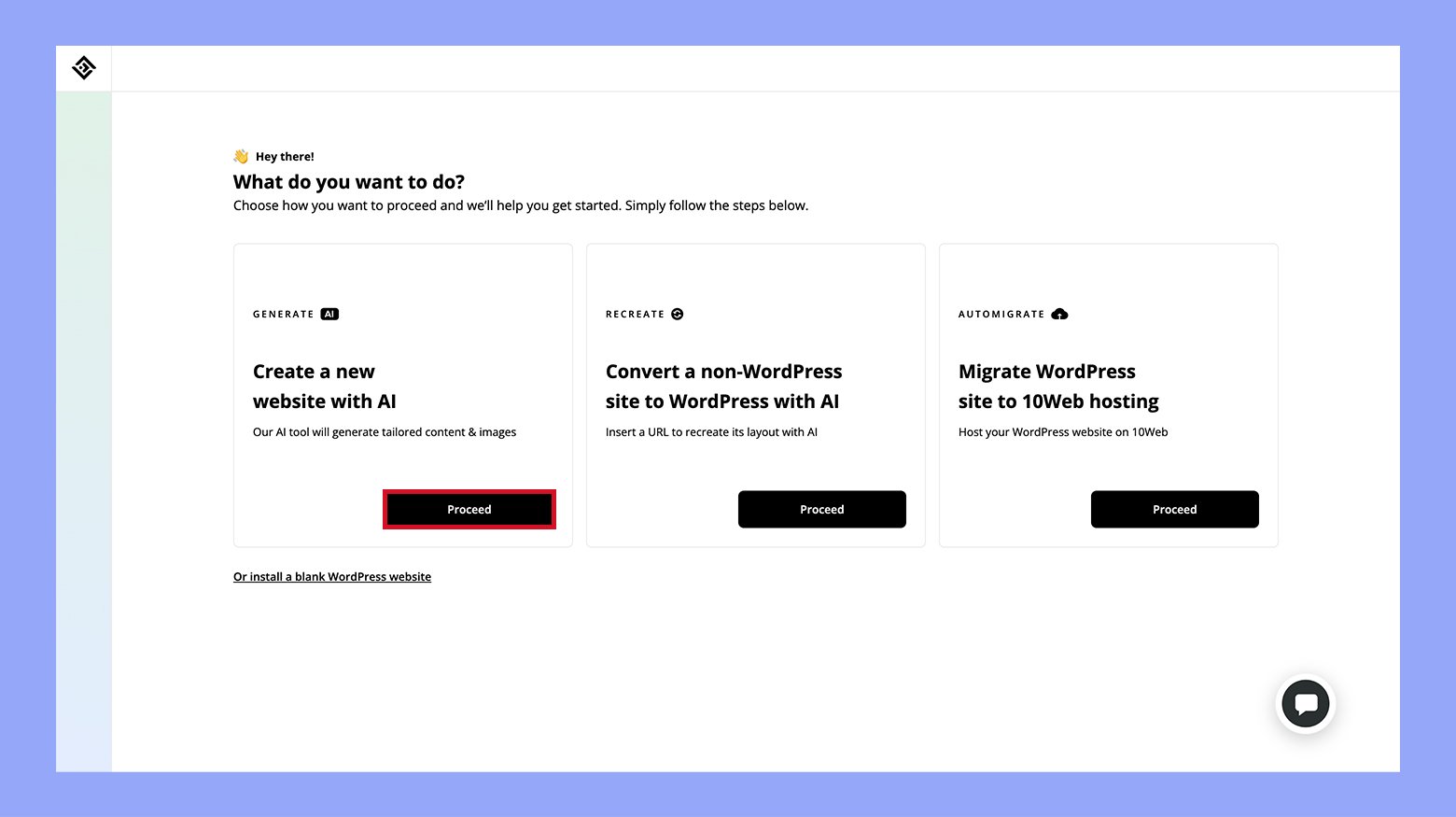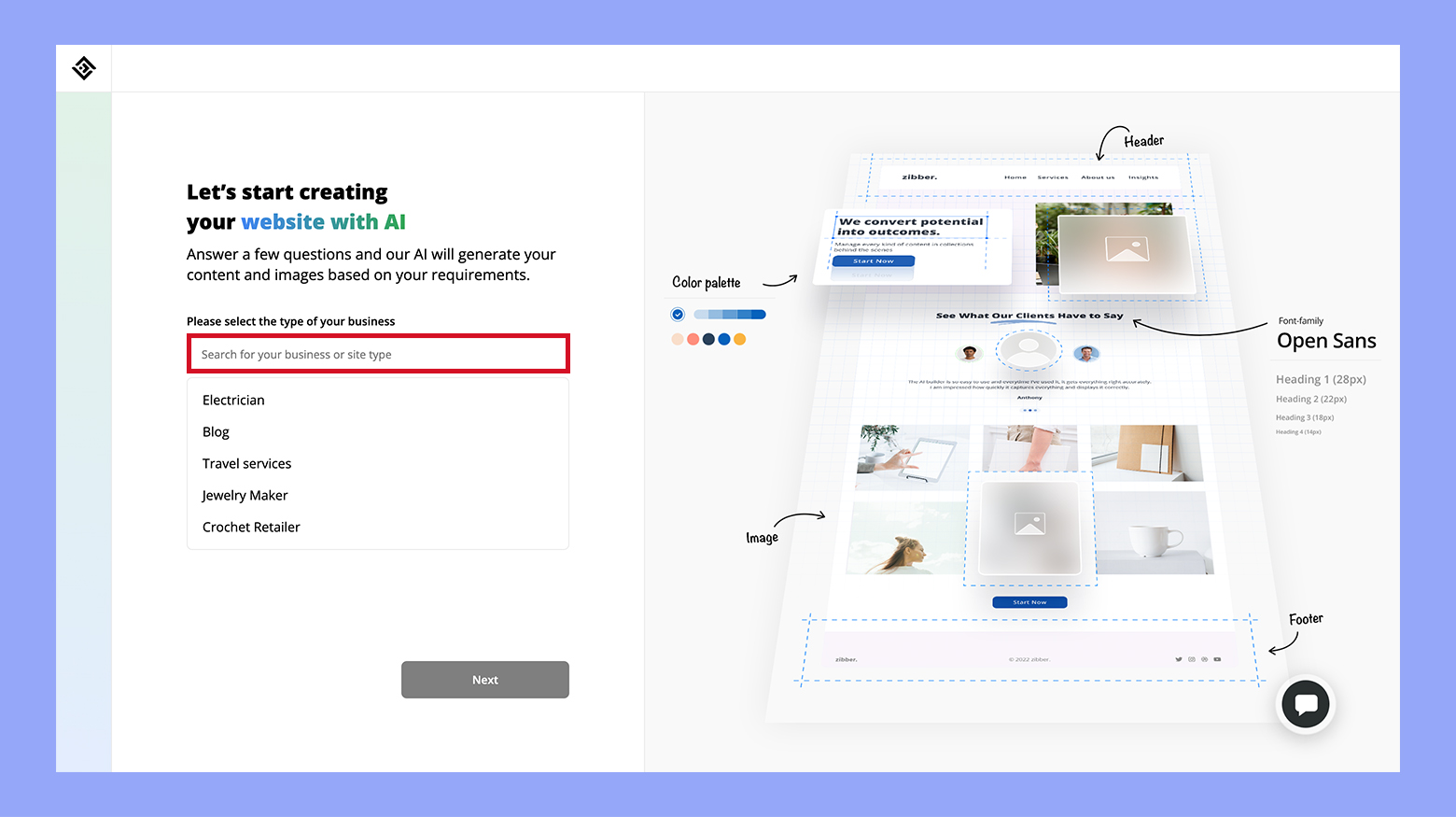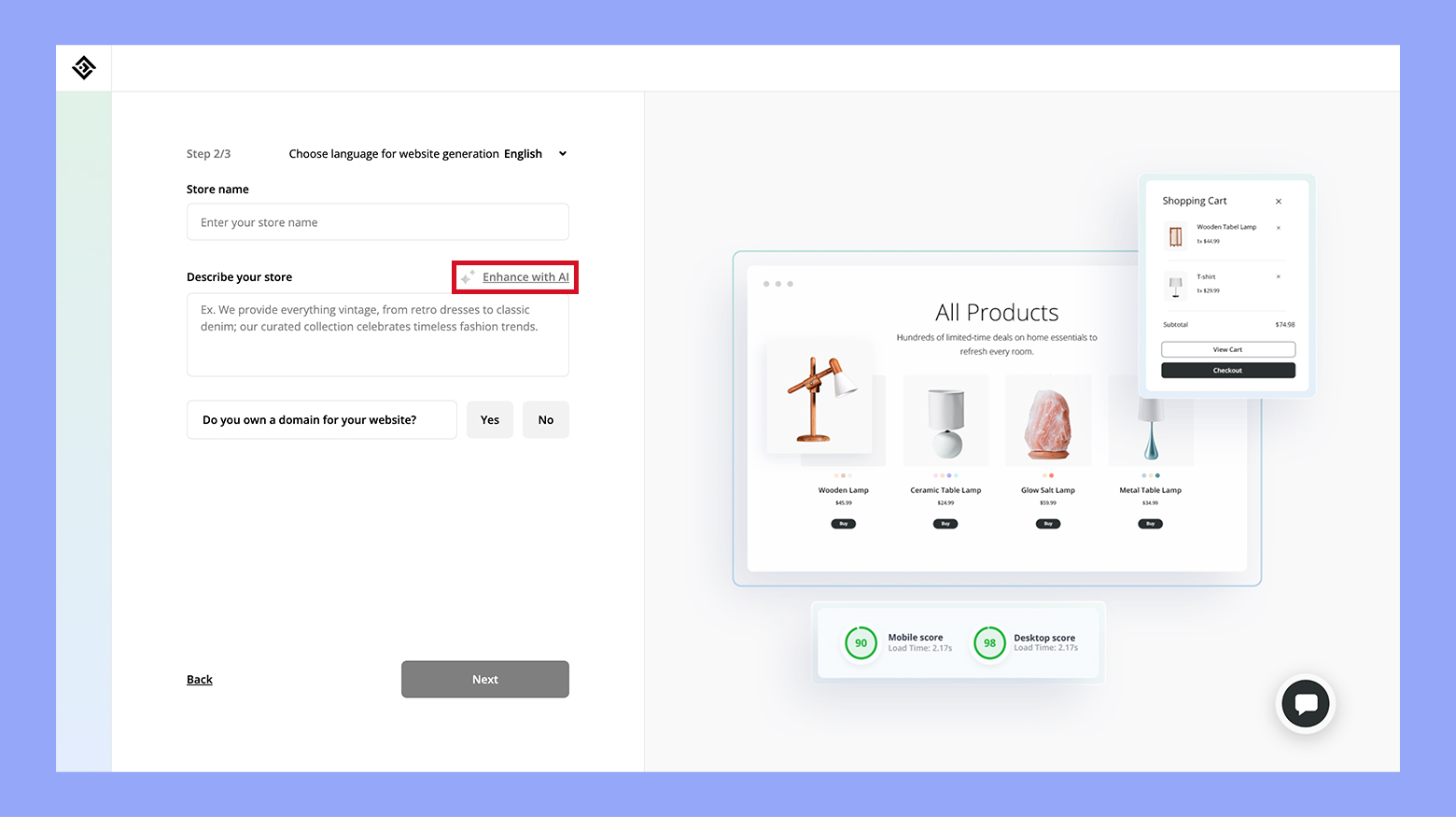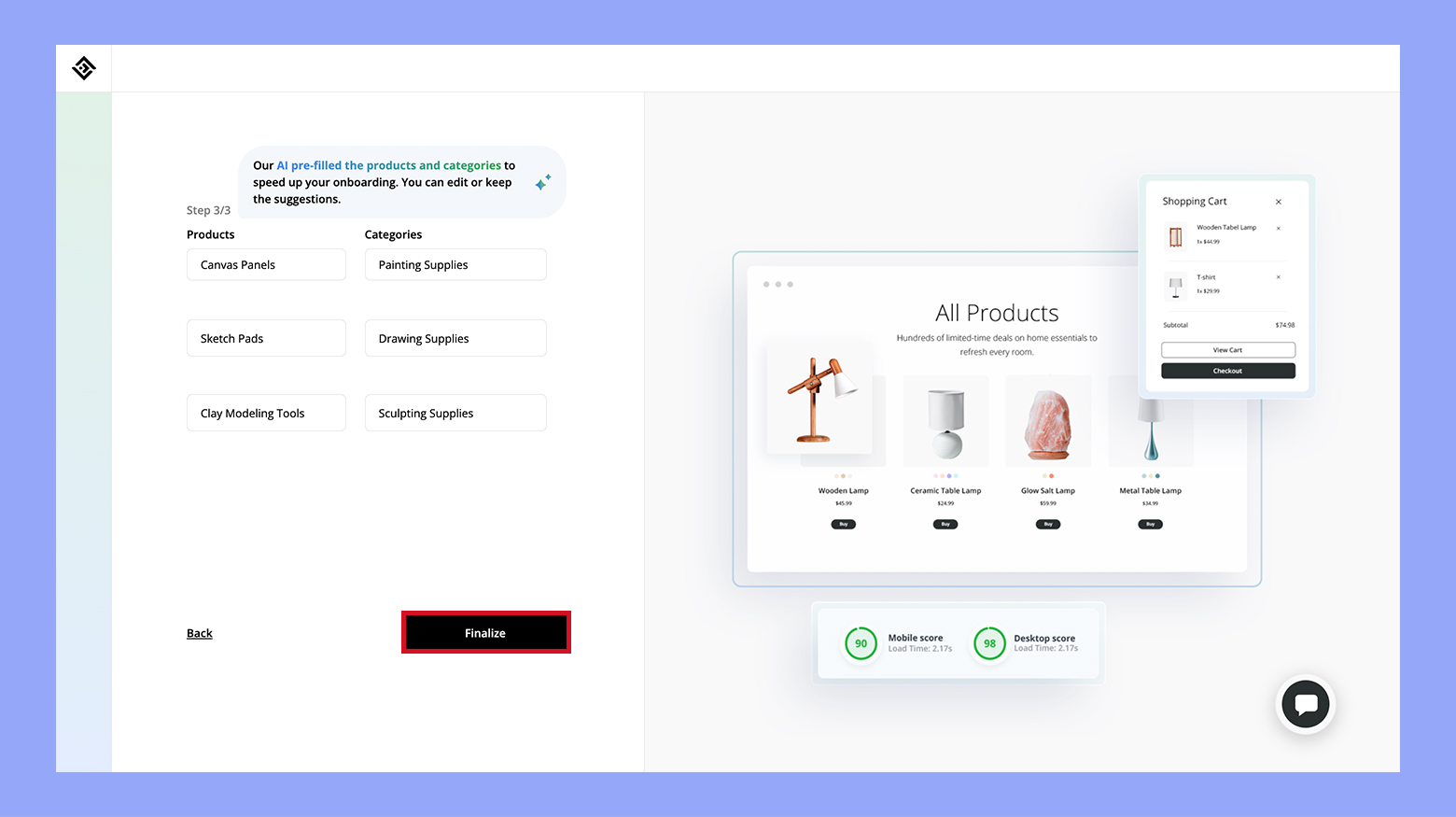Starting a recruiting business can be an excellent decision. The rising need for talented employees means companies are turning more to recruitment services. In this guide on how to start a recruiting business, we’ll cover key steps such as choosing your target market, defining your brand, creating a business plan, understanding legal requirements and more. By following these foundational steps, you’ll be well-prepared to launch and grow a successful recruiting business.
FAQ
How do you start a recruitment process?
Do I need a license to start a recruitment agency in Australia?
Do I need a license to start a recruitment agency in Canada?
How to start an agency business?
Can one person run an agency?
Can I start an agency with no experience?

Looking to sell online?
Create your custom online store in minutes with 10Web AI Ecommerce Website Builder and take your business online.
Stage 1: Setting the groundwork for your recruiting business
To start a recruiting business, you must build a strong foundation. This includes identifying your target market, defining your brand, creating a detailed business plan, ensuring you understand the legalities and more.
Step 1: Choosing your target market
Identifying your target market is crucial. Focus on a specific niche to stand out. For instance, you might specialize in tech, healthcare, or administrative staffing. Conduct market analysis to pinpoint the industries with high demand.
List potential clients and their needs. This helps in tailoring your services. Knowing your market ensures you provide the right candidates, increasing your business’s success.
Step 2: Creating a business plan
A business plan is your roadmap. Outline your mission, vision, target market, and services. Detail your marketing strategies and financial projections.
Include a SWOT analysis to identify strengths, weaknesses, opportunities, and threats. This helps in planning for challenges and growth. A solid business plan is essential for attracting investors and guiding your business.
Step 3: Understanding legal structure and compliance
Choose the right legal structure for your business. Common structures include LLC (Limited Liability Company) and corporation. Each has its benefits and implications for taxes and liability.
Register your business and obtain necessary licenses and permits. You will likely need a business license, EIN (Employer Identification Number), and professional licenses. Consulting with an attorney ensures you comply with employment laws and regulations, protecting your business from legal issues.
Step 4: Defining your brand and mission
Your brand and mission set you apart. Define what your agency stands for and what you aim to achieve. Your mission statement should be clear and inspiring.
Create a brand identity that reflects your mission. This includes your logo, colors, and tone of voice. Consistent branding helps build trust with clients and candidates alike.

Selecting a business name is also crucial for making a good first impression. Your business name should be unique, reflect your values, and be easy to remember. It’s important to check that the name isn’t already in use or trademarked. You can use a domain registry like GoDaddy to see if the web domain is available.
Consider how the name looks and sounds. It’s often helpful to keep it short and simple. Abbreviations or acronyms can also be useful if you want a shorter name. Additionally, ensure it’s clear that you are in the recruiting business. For example, including words like “Recruit” or “Talent” can help.
Lastly, test the name with friends or colleagues to see their reactions. Their feedback might provide new insights or confirm your choice.
Step 5: Designing your logo and marketing materials
A strong logo and professional marketing materials help communicate your brand’s identity. When designing a logo, focus on simplicity and relevance. A well-designed logo should represent your business ethos and be easy to recognize.
Invest in high-quality design software or hire a professional designer. Choose colors and fonts that align with your brand’s personality. Your logo should be versatile, looking good both online and in print.
Effective marketing materials include business cards, brochures, and a professional website. Ensure your website is user-friendly and mobile-optimized to reach a broader audience. Establishing an online presence on platforms like LinkedIn also helps in connecting with potential clients and recruits.
Incorporate your logo into all materials to maintain a consistent brand image. That way, people can easily recognize and trust your recruiting business across different formats and channels.

Looking to sell online?
Create your custom online store in minutes with 10Web AI Ecommerce Website Builder and take your business online.
Stage 2: Developing services and setting up operations
To set up your recruiting business, start by defining your services and organizing your operations. Accurately manage your finances, hire skilled staff, and build a positive company culture. Network with clients and keep an eye on market trends and competitors. Following these steps will help ensure your growth and success.
Step 1: Determining services and pricing structure
Identify the specific services your recruiting business will offer. Common services include candidate sourcing, full-cycle recruiting, employer branding, and recruitment process outsourcing (RPO).
Next, decide on your pricing structure. You can choose between retainer fees, contingency fees, or percentages of the candidate’s first-year salary. Each has its benefits, so pick the one that aligns with your business model.
A well-designed pricing structure ensures you stay competitive while covering your operating costs. Offering flexible pricing packages can also attract a wider range of clients.
Step 2: Establishing recruitment processes
To ensure a smooth workflow, create standardized recruitment processes. This starts with developing job descriptions, advertising positions, and sourcing candidates.
Screen candidates through initial interviews, skill assessments, and background checks. Adopt Applicant Tracking Systems (ATS) to streamline the candidate management process.
Finally, provide ongoing support to both clients and candidates post-hire. Implement performance tracking techniques to monitor the success of your placements.
By defining these processes, your business will run more efficiently, and clients will find your services reliable and effective.
Step 3: Acquiring office space, equipment and technology
The first step is to decide whether you need a physical office or if you can work from home. A home-based setup is cost-effective, but a physical office can give a professional appearance.
Next, you should list essential equipment like computers, phones, printers, and furniture. Desks, chairs, and storage solutions are must-haves. Ensure your office has a comfortable and productive environment.
To start, budget for initial setup costs which can range widely. For a home office, $5,000 to $30,000 might be sufficient. A physical office could need $40,000 or more, depending on location and size.
Technology plays a big role in modern recruiting. You’ll need robust software to manage client and candidate information efficiently.
Start by selecting a Customer Relationship Management (CRM) system designed for recruitment. This software keeps track of your communications, candidate details, and client information.
Next, invest in Applicant Tracking Systems (ATS). These tools help filter and organize job applications, making sure you only spend time on the best candidates.
Make use of cloud-based collaboration tools like Google Workspace or Microsoft 365 to ensure smooth communication within your team. Budget for software subscriptions accordingly, as these are crucial for efficient workflow.
Step 4: Hiring staff and cultivating company culture
When building your recruiting business, identify the skills and experiences needed for your team. Start by creating clear job descriptions for each role. List the required qualifications, such as recruiting experience, communication skills, and knowledge of specific industries.
During the interview process, prioritize candidates who align with your company’s values and vision. Look for individuals who demonstrate enthusiasm for the industry and an understanding of your clients’ needs.
Consider diversity and inclusion during hiring. Aim to build a team with varied backgrounds, ages, and genders. This diversity can lead to new ideas and more effective problem-solving. Finally, invest in ongoing training and development to help your staff grow their skills and stay updated with industry trends.
Only hiring qualified personnel is not enough. You should try to build a company culture, which starts with defining your core values and vision. Make sure all team members understand these principles and know how they guide daily operations. Promote an open and transparent communication style where everyone feels valued and heard.
Encourage teamwork and collaboration by organizing team-building activities and regular meetings. This helps build trust among staff and improves overall morale. Recognize and reward the achievements of your team. Celebrate milestones, both big and small, to show appreciation for their hard work.
Fostering an inclusive environment is crucial. Develop policies that promote diversity and inclusion. Ensure your workplace is free from discrimination, and offer equal opportunities for all employees. This supportive environment will attract and retain high-quality talent, helping your recruiting business thrive.
Step 5: Building relationships with potential clients
Building relationships with potential clients starts with clear communication and trust. Personalize your approach when reaching out to a new client. Mention specifics about their company and why you think your recruiting services will help.
Use LinkedIn and other professional networks to find decision-makers in your target industry. Joining groups and participating in discussions can also help you gain visibility.
It’s also helpful to get referrals from your current network. Ask satisfied clients to recommend your services to others in their industry. Building a reputation for reliability and success will attract more clients over time.
Attending industry events
Attending industry events can help you meet potential clients face-to-face. Look for conferences, trade shows, and seminars in your target industry. These events are great for making connections and learning about the latest trends.
Prepare by making business cards with your contact information. Have a brief elevator pitch ready to explain your services quickly and clearly.
After the event, follow up with the people you met. Send a quick email or connect on LinkedIn to continue the conversation. Showing genuine interest in their needs can lead to future business opportunities.
Make sure you keep track of the contacts you make. Use a simple CRM tool to stay organized and follow up regularly.

Looking to sell online?
Create your custom online store in minutes with 10Web AI Ecommerce Website Builder and take your business online.
Step 6: Setting up your financial systems
Having solid financial systems in place is crucial for managing your startup costs, revenue, taxes and more. Start by opening a business bank account to keep your finances separate from personal expenses.
You should also look into accounting software like QuickBooks or FreshBooks. These tools help track your expenses, generate invoices, and prepare for tax season.
Set up a payroll system if you plan to hire employees. This can either be handled in-house with payroll software or outsourced to a payroll service provider.
Create a financial plan that includes a budget for all your expenses and projected income. This helps track your progress and ensures you are meeting your goals.
Budgeting and managing cash flow
Creating a budget is one of the first steps in managing your financial health. List all anticipated expenses such as office rent, employee salaries, marketing costs, and software subscriptions.
Keep track of all incoming revenue from services provided to clients. Monitor your profit margins by comparing your income to your expenses regularly.
Maintain an emergency fund to cover unexpected expenses and avoid cash flow problems. Use software tools or hire an accountant to track your finances accurately.
A key piece of advice: always align your spending with your business goals to ensure sustainable growth.
Understanding taxes and insurance
Taxes are a significant aspect of your financial health. Research the specific tax requirements for your business type and location. Set aside a portion of your earnings for tax payments to avoid financial strain at tax time.
General liability insurance is essential to protect your business from potential legal claims. Business insurance can also cover property damage, theft, and other risks.
Consult with a tax professional and insurance advisor to ensure you comply with regulations and have adequate coverage. This proactive approach will safeguard your profits and ensure long-term success for your recruiting business.
Step 7: Adopting new technologies and monitoring market trends
Innovation plays a key role in modern recruitment. Using artificial intelligence (AI) can greatly enhance your processes. For example, AI can help in screening resumes, matching candidates to job profiles, and even scheduling interviews. These technologies save time and reduce human error.
It’s also important to leverage data-driven recruiting. By collecting and analyzing data related to candidate sourcing, communication, and assessment, you can make more informed decisions. Tools that offer advanced analytics can show trends in the job market and help tailor your approach to meet your target market’s needs.
Integrating technology like Applicant Tracking Systems (ATS) streamlines the workflow. This makes it easier to manage multiple candidates and positions simultaneously. Staying updated with tech advancements ensures you’re offering the latest and most efficient recruiting services.
Monitoring market trends and competition
Regularly conducting market research helps you understand the latest trends and shifts in the job market. Knowing what candidates and employers are looking for enables you to adjust your strategy accordingly. For instance, the rise in remote hiring and diversity and inclusion initiatives are crucial trends to monitor.
Keep an eye on your competition. Research what other recruiting businesses are doing, from their service offerings to their technological tools. This will help you identify gaps in your own services and opportunities to differentiate yourself.
Engage with industry reports and attend recruitment conferences for insights on best practices and upcoming trends. This will keep your business ahead and well-positioned in the competitive landscape.
By staying ahead of the curve, you ensure that your strategies remain relevant and robust, making your venture into how to start a recruiting business successful.
Stage 3: Marketing your services and planning for growth
To effectively market your recruiting business, build a strong online presence, develop a professional website, create a sales plan, and use social media and job boards. Grow by scaling strategically and exploring new markets to ensure steady revenue and a solid market presence.
Step 1: Building an online presence
Your online presence is crucial for attracting clients and candidates. Start by establishing profiles on major social media platforms such as LinkedIn, Facebook, X, and Instagram. Each platform offers unique opportunities to connect with different segments of your target market.
Next, consider creating a blog or contributing articles to industry websites. This will showcase your expertise in the recruitment field and help establish you as a thought leader. Remember to regularly update your content to keep your audience engaged and informed.
Finally, join online forums and communities related to recruitment. Participate in discussions, answer questions, and share insights to build your reputation and network.
Step 2: Building your website with 10Web
Creating a professional website is essential for your recruitment business. Using a platform like 10Web, you can easily build and customize a website that suits your needs.
- Navigate to the 10Web Website Builder page and click on Generate your website.

- Click Proceed to create a new website with AI.

- Input your business type.

- Enter your business name and description. If needed, use the Enhance with AI tool

- Choose Yes to get a domain or select No if you already have one.
- Fill in details for your first three services and categories. The AI will pre-fill them, and you can edit or keep the suggestions. Click Finalize when done and wait for 10Web to generate your site.

- After your site is generated, preview it and make any necessary adjustments using the tools provided by 10Web.
Incorporate SEO best practices to improve your site’s visibility on search engines. Use relevant keywords, meta descriptions, and alt text for images. Integrate tools like Google Analytics to track visitor behavior and adjust your marketing strategy as needed.

Looking to sell online?
Create your custom online store in minutes with 10Web AI Ecommerce Website Builder and take your business online.
Step 3: Crafting your sales and marketing plan
A well-defined sales and marketing plan guides your efforts and ensures you reach your goals. Start by identifying your target audience and understanding their needs. This helps you tailor your messaging and services to meet their demands.
Develop a clear value proposition that highlights what sets your recruitment business apart from competitors. Use this value proposition in all your marketing materials, including your website, social media posts, and advertising campaigns.
Create a content calendar to plan and schedule your marketing activities. This ensures a consistent and strategic approach to your marketing efforts. Include a mix of content types, such as blog posts, videos, webinars, and case studies.
Step 4: Leveraging social media and job boards
Social media and job boards are powerful tools for reaching your target market. Start by sharing valuable content on your social media profiles. This can include industry news, tips for jobseekers, and success stories from your clients. Engage with your audience by responding to comments and messages promptly.
Job boards are another effective way to market your services. Post job openings on popular job boards like Indeed, Glassdoor, and LinkedIn. Use clear, concise job descriptions and highlight the benefits of working with your recruitment agency.
Consider using paid advertising on social media and job boards to expand your reach. Platforms like Facebook and LinkedIn offer targeted advertising options that allow you to reach specific demographics and industries. Track the performance of your ads and adjust your strategy based on the results.
Step 5: Scaling your business strategically
Scaling requires careful planning to ensure your business can handle increased demand without compromising service quality. Start by evaluating your current operations. Examine your workflows and identify any areas where efficiency can be improved.
Invest in technology to automate repetitive tasks. For example, applicant tracking systems (ATS) can streamline candidate management.
Hiring additional staff is essential. Recruit experienced recruiters and provide training so they are well-prepared. Consider offering remote work options to attract talent from different regions. Maintain clear communication and strong team collaboration.
Monitor key metrics like client acquisition costs, placement rates, and time-to-fill vacancies. Adjust your strategies based on these metrics to improve performance and meet growing demands.
Step 6: Exploring expansion into new markets
Expanding into new markets can provide fresh opportunities for growth. Research potential markets to understand their demand for recruitment services. Focus on industries where your recruitment agency niche can thrive, such as technology, healthcare, or finance.
Create a tailored pitch for each new market. Highlight your expertise and success in placing candidates in similar roles. Building relationships with key industry players can also help establish credibility.
Set clear goals for your market expansion and regularly review progress. This includes monitoring new client acquisitions and the success of your placements.
Network extensively at industry events and online forums. Joining professional associations can provide valuable connections and insights into new markets.
Conclusion
The demand for recruiting services is on the rise as companies seek top talent to drive their success. Learning how to start a recruiting business involves building a strong foundation by identifying your target market, defining your brand, and creating a detailed business plan. Understanding legal requirements, setting up efficient operations, and utilizing effective marketing strategies are crucial steps. By following these guidelines, you can establish a successful recruiting business and meet the growing needs of employers and candidates alike.


















